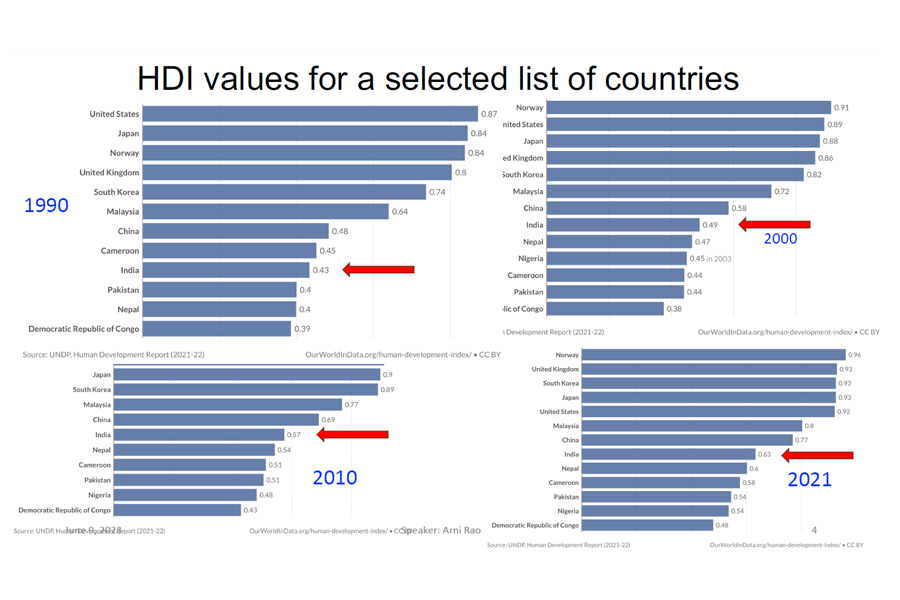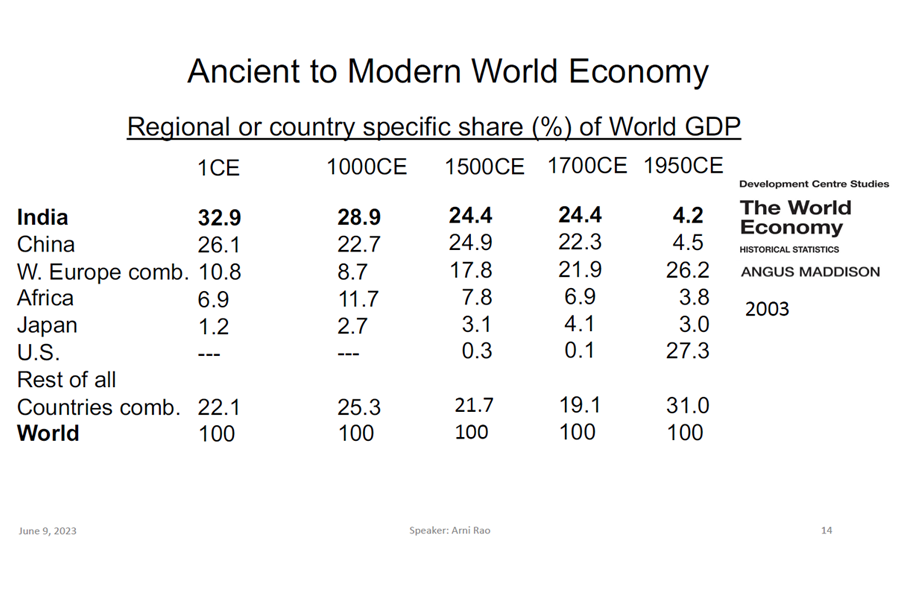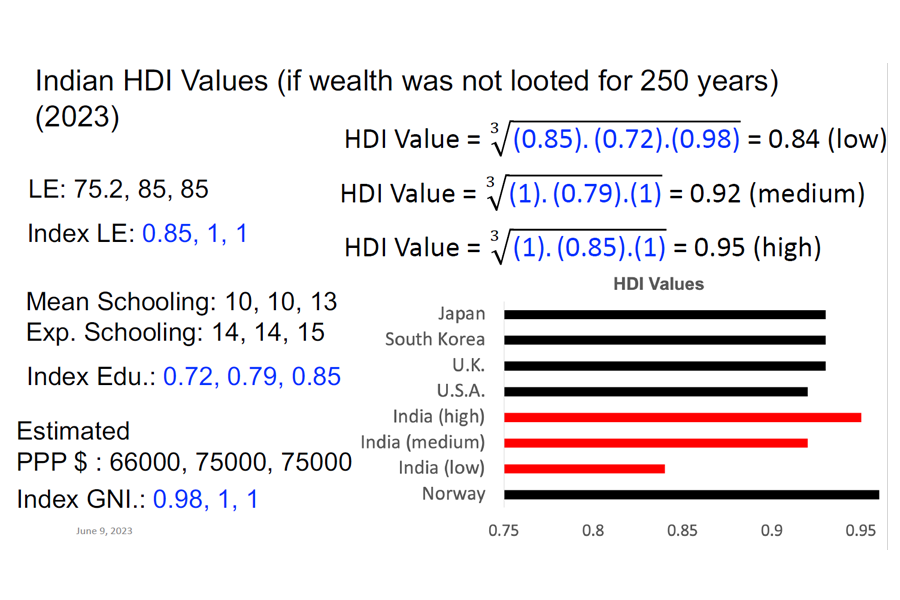In 2022, Arni S.R. Srinivasa Rao, PhD, published a research paper outlining his thoughts on why the United Nations Development Programme (UNDP) should consider expanding the Human Development Index (HDI) to include history prior to 1990.
On June 9, Rao followed up on that article when he delivered a presentation hosted by the Department of Education in Science and Mathematics within the National Council of Educational Research and Training of India. The presentation, “United Nation’s Annual Country-Wise Human Development Index,” was part of the group’s National Student Outreach Program and the Pravasi Bharatiya Academic and Scientific Sampark’s series “Integrating Indian Diaspora with the Motherland.”
The presentation was made available via national television channels in India, as well as YouTube and Facebook live streams.
“This talk was about the basics of the Human Development Index by the UN, the computation of the index and presenting a serious criticism of the index for its practical utility without it being adjusted for the loot of wealth during the colonial era in several countries,” said Rao, a professor and director at the Laboratory for Theory and Mathematical Modeling in the Division of Infectious Diseases at the Medical College of Georgia at Augusta University.
“The talk discussed economic and business structure in all the regions of the world for the past 2,000 years and demonstrates, with published pieces of evidence, how the GDP was high in countries like India before the British occupation started around 1700. India almost shared around 24 to 32% of the global GDP from the 1st century CE to 1700 CE which was the highest in the world. The global GDP share of India went down to 4.2% by the time the British left ruling India in 1947.”
Rao began his presentation by showing the audience HDI values published by the UN for a selected list of countries, including the United States, the United Kingdom, China, India, Pakistan and others. The values were shown for 1990, when the HDI was launched, 2000, 2010 and 2021.


Rao then outlined the basics of the HDI and what it measures: the average health of individuals in a country, the standard of education in that country and the average living standards of the population in that country. He also explained how HDI is computed as a geometric mean and explained that, at its core, the mathematic formula has no error, but he did note that wealthier countries during the 1990-2021 span have a higher correlation of higher HDI.
Rao noted that the HDI does not take into account any development prior to 1990, with human civilization having started more than 5,000 years ago. Similar to his paper published in late 2022, Rao noted the HDI should look more at the economic, social and development of wealth over those missing centuries.
Rao went on to share several economic activities within India’s history which changed the narrative of the country’s HDI score, including how from 1 CE through 1950 CE, India went from sharing 32.9% of the world’s gross domestic product (GDP) to just 4.2%.


A major cause for this was the colonization of the country by the United Kingdom, when much of the country’s wealth was removed by colonizers.
In Rao’s presentation, he researched what HDI values for India would be, had “colonial looting” not occurred for over 250 years. Rao offered a high-end speculation of 0.95, a medium value of 0.92 and a low estimate of 0.84, noting this was the first time such estimates were calculated for India.


He based this off an estimated historical HDI value of 0.71 in 1700 before colonization and looting began. At the time, India was estimated to have shared 24.4% of the world’s GDP. With everything in mind, Rao states that India’s 2023 HDI value would be between 0.84 and 0.95, rather than the 0.66 he calculated it to be, using the UN’s formula.
 Augusta University
Augusta University





